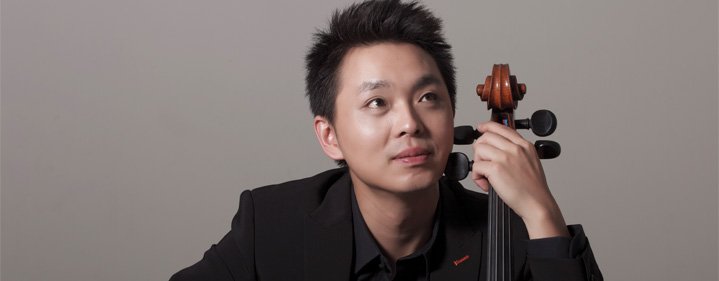ROCOCO CELLO
Melbourne Recital Centre
Sunday March 5, 2017

Li-Wei Qin
In a program for the MCO’s true believers, Sunday afternoon’s concert didn’t have much rococo about it, strictly speaking. Popular cellist Li-Wei Qin fronted the Tchaikovsky Variations on a Rococo Theme but it’s a stretch to call the tune itself anything but a Classical/Romantic fusion. The rest of the afternoon featured Mozart’s Idomeneo Overture with its pendant Chaconne and Pas seul de Mr le Grand, the Haydn G Major Symphony No. 88 and C.P.E. Bach’s A Major Cello Concerto Wq 172 which came closest to the rococo classification but sits some decades outside it temporally and at least a generation past it intellectually.
Michael Dahlenburg conducted three of these works, leaving the Bach concerto’s direction in the experienced hands of leader William Hennessy, the orchestra’s presiding eminence. With the Idomeneo bracket, the main impression was of jubilation, the score representing a celebration of the organization’s start to another year’s work. For a pretty straightforward work, you had to hand it to Dahlenburg: he showed a confident awareness of the spacious sound he wanted and he cued impeccably – nothing unnecessary or over-pointed. His forces responded with plenty of zeal and an invigorating bounce from the strings; the only flaw I heard was a muffed horn note in about bar 44 of the Pas seul. But the reading proved excellent, well calculated to open an opera seria distinctive for its polish and subtle melodic content.
Li-Wei gave an object lesson while performing Emanuel Bach’s benign concerto with its agreable angularity of line and sudden harmonic jolts. In front of only 14 strings, the soloist had no difficulty in projecting a resonant timbre throughout, the only strident note emerging in the middle of the first movement’s development with an over-emphatic conclusion to a hectic passage featuring a plethora of semiquavers; relief to get there unscathed, I suppose.
In the program, this work’s second movement was billed as Largo maestoso. Well, that’s half-right – it’s a largo but mesto, and con sordini. Despite its misnaming, the performance proved admirable in shape and steady progress. Later, the finale came over with infectious vigour, a real bite to the violins’ triple and quadruple stops with all concerned applying just enough tension to the composer’s sudden halts in the action.
For the Haydn symphony, Dahlenburg returned and led a remarkably clean operation, with few glitches from the brass quartet and a fine amplitude of colour in the opening Adagio. I found the accents and/or sforzandi too heavy in the Menuetto, even more so in the Allegretto/Trio. And, while you could hear every note sound clearly in the final Allegro, a continuation of the sparkling opening bars would have been more exhilarating than the rhythmic variations and heftiness that took over before the movement was far advanced.
The Tchaikovsky Rococo Variations is one of the repertoire’s gems, without a doubt, but you’re lucky to strike a reading that satisfies; too often, the sense of effort is almost palpable and most executants over-strain at their work when a simple delineation of the notes would serve the composer much better. I last head Li-Wei perform this some years ago – with the Melbourne Symphony Orchestra, I think – and that reading proved a trial because the soloist seemed uncomfortable in his work. This time around, the outcome was much more convincing, in some part due to the (obvious) chamber quality of the fabric where the wind choir, especially in their recurring post-variation commentary, were very exposed.
Li-Wei offered a lucid view of the solo line, happy to reserve his warmest colour for the Variation III Andante sostenuto which he lavished with an all-embracing vibrato and a disciplined rubato both here and in the minore Andante Variation VI, still having plenty of powder dry for the preceding cadenza. A wonky harmonic aside, this was a top-notch interpretation, full of the milk of Tchaikovsky’s kindness yet capable of brisk drive and a confident despatch of the technical fireworks. During the later stages, the clarinet duo dominated the woodwind choir on occasions, their support drowning out the more melodically important matter carried by oboes and flutes. But, more importantly, Dahlenburg exerted a flexibility of phrase-shaping in most parts of the score that did justice to this amiable music.